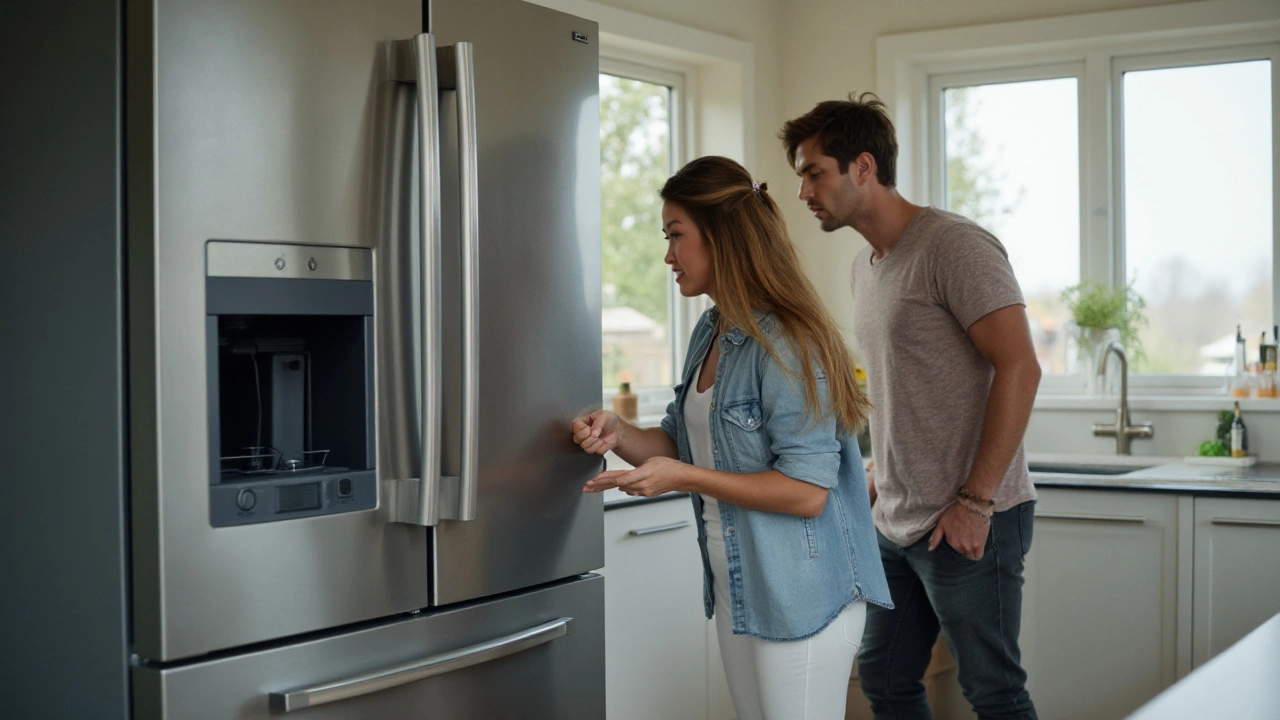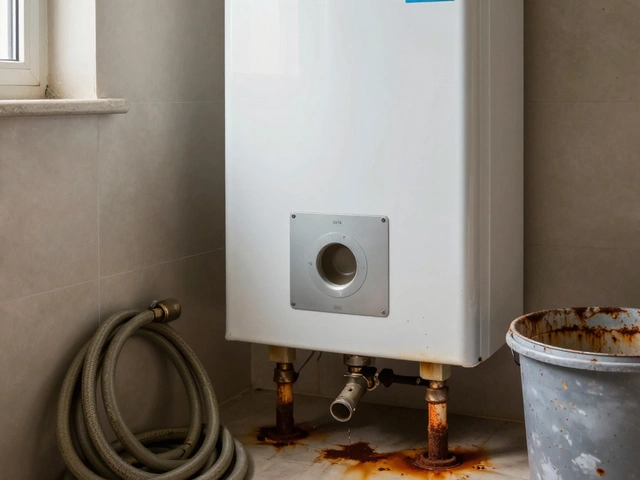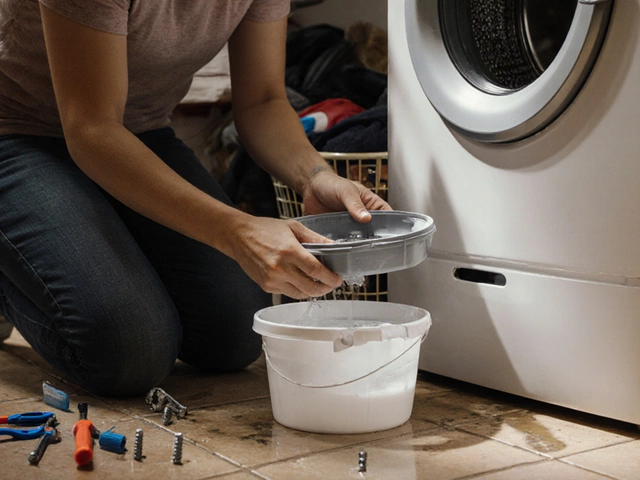It's a chilly dilemma nobody wants to face—your once trusty freezer has suddenly stopped supplying those frosty cubes of ice. Whether you're hosting a gathering or simply enjoying a cold drink, an unreliable ice maker can certainly put a damper on your plans. But don't worry; you're not alone in this icy predicament.
Before you rush to call a repair person, take a moment to understand the usual culprits behind this inconvenient freeze-out. Often, the solution can be a simple fix, saving you time and money, and getting that ice maker humming again with little fuss. You'll be reaching for those refreshing ice-filled beverages once more in no time!
- Common Reasons for Ice Maker Failure
- DIY Troubleshooting Techniques
- When to Seek Professional Help
- Preventative Maintenance Tips
- Understanding Ice Maker Components
Common Reasons for Ice Maker Failure
When your ice maker suddenly refuses to work, it might feel like you're left out in the cold, but there's no need to push the panic button just yet. Freezers come with their own quirks and understanding them is key to diagnosing the problem. One common cause could be a blockage in the water line. This tubing can easily become frozen or clogged by minerals, making it impossible for water to reach the ice maker. It’s a simple enough issue to check—just defrost the tube or clean away any visible obstructions.
Another reason could be related to the temperature settings. Freezing might seem like one of those things that's either on or off, but an incorrect freezer setting can impact performance. If the freezer is too warm, ice will not form well, while extremely cold settings might keep the water line frozen, resulting in no ice production. Checking your freezer's thermostat and ensuring it is set around 0 degrees Fahrenheit is a good start. A malfunctioning thermostat is something to keep in mind as well.
The water filter plays a crucial role too. Over time, filters can become dirty or clogged, preventing water not only from reaching the ice maker but also affecting the quality of water getting through. Manufacturers usually recommend replacing these filters every six months to ensure optimal performance. A neglected filter often leads to gradual or complete halts in ice production.
It's also important to consider the ice maker’s motor and gears. Like a symphony, all parts need to work in harmony. Worn out or damaged mechanical parts can often lead to jamming or irregular function in your ice maker. Look for signs of squeaks or grinding noises, which might indicate the gears are struggling. While this can require a professional hand, identifying the problem early can save both time and money.
Occasionally, software plays a part, especially in modern appliances. Control boards can malfunction, much like a computer glitch, leading to errors in the ice-making process. Resetting the appliance, either by switching it off or following your manual's procedure, can sometimes solve these problems without additional help.
"Ice makers have a straightforward nature, but they rely heavily on perfect conditions," explains appliance expert John Miller. "When one part gets out of sync, it can break the cycle of production."
Remember, addressing these issues promptly not only brings back the ice supply but also prolongs the life of your appliance. Whether the solution comes down to thawing a tube or adjusting the thermostat, understanding common reasons for failure keeps you cool under pressure and ensures your trusty freezer remains a reliable assistant in your daily routine.
DIY Troubleshooting Techniques
So, your freezer's ice maker has decided to go on strike. No need to panic just yet—before you pick up the phone to call for professional help, there are plenty of troubleshooting tips you can try on your own. It’s remarkable how often these common issues can be resolved with a bit of investigating and hands-on tinkering. First on the list is to check the water supply line. If this crucial conduit is kinked or blocked, it's unlikely your freezer will be able to churn out those ice cubes you so dearly miss. Ensure the line is straight and the water valve is open. Sometimes, it’s the simplest things, like a partially closed valve, that can lead to hours of confusion.
Next, it's worth taking a good look at the ice maker’s arm. This little lever could be telling your freezer not to make more ice if it's in the wrong position. By lowering it, you might just prompt a fresh batch of ice to start forming. If that doesn't do the trick, consider resetting the ice maker itself. On most models, this is as easy as locating the reset button and holding it down until you hear a chime or see a light flash. Some users report the ice maker magic happens after this simple reset.
Another factor to consider is the ice mold. Ice makers work by employing a mechanism that periodically fills a mold with water, which then chills to become the ice cubes we know and love. If the mold is clogged with frozen debris or the cubes are stuck, the problem could perpetuate without intervention. Carefully inspect the mold for any signs of blockage or stuck cubes, and gently remove any obstructions with warm water to dissolve ice or a soft instrument to nudge away loose debris.
Checking for Temperature Irregularities
The freezer temperature also matters more than you might think. If the freezer isn't cold enough, the water won’t freeze properly. Ensure the freezer maintains a steady temperature of around zero degrees Fahrenheit. An external thermometer can help you verify the internal conditions. Additionally, inspect the freezer door seal to make sure it's closing tightly. A loose or damaged seal could impair performance without you realizing it.
"An ice maker's efficiency largely depends on environmental factors, including maintaining optimum temperature levels," says expert appliance technician Johnathan Wilkes.Finally, remember that dust and grime can interfere with normal operation. While it might not seem like a big deal, cleaning the condenser coils can lead to better performance and efficiency. Unplug the freezer and use a coil brush or vacuum cleaner designed for appliances to remove the buildup. A clean machine is a happy machine, as they say!
Those willing to roll up their sleeves might also take a peek at the water filter. If it’s clogged or overdue for a change, water flow to the ice maker could be restricted, leading to problems. Regular replacement, usually every six months, is key to keeping things in working order and ensuring your ice remains clean and fresh. Additionally, check for any error codes displayed on the freezer's panel, if applicable, which could direct you toward a specific issue needing attention.
Engaging these *DIY troubleshooting techniques* can often save you from unnecessary anguish and expense. By patiently working through these steps, you might just emerge victorious, restoring your freezer to full freezer repair functionality—sometimes all it takes is a little TLC to coax your ice maker back to life!
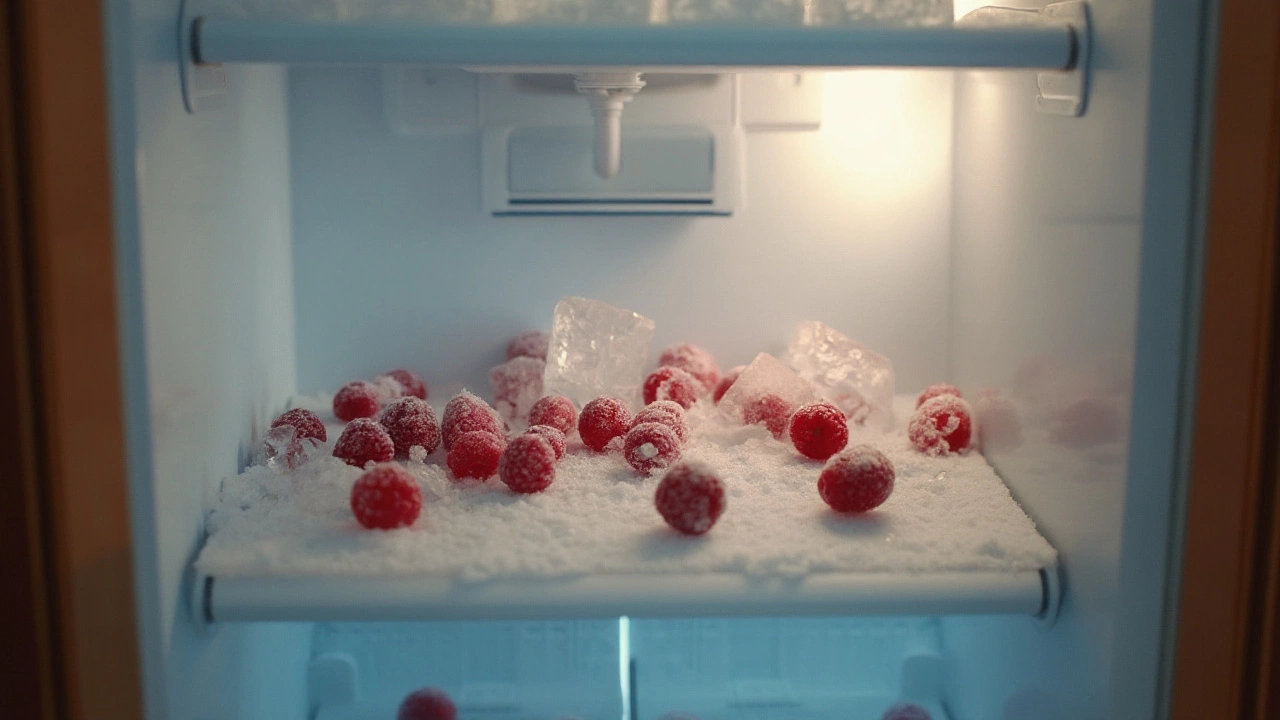
When to Seek Professional Help
You've tried all the standard troubleshooting approaches, checked the water supply, fiddled with the settings, but to no avail. There comes a moment when even the most determined DIY enthusiast must bow out, and it's time to consider whether the issue with your ice maker warrants a call to the professionals. Recognizing when you're out of your depth can save you from turning a minor inconvenience into a full-blown freezer repair emergency. So, how can you tell that it's time to hang up your tools and pick up the phone?
If your investigations reveal that the ice maker's motor is humming, yet no ice is produced, you might be dealing with a mechanical failure that requires specialized tools and expertise. This could range from issues with the electronic control board to more intricate malfunctions involving the gear box that drives the ice ejector's mechanisms. These components can be tricky to access and repair without the detailed understanding a trained technician would possess.
A strong indicator that professional intervention is necessary is discovering leakage either inside the freezer compartment or pooling outside, suggesting a problem with the water inlet valve or perhaps a more severe plumbing issue. While it might be tempting to tackle these challenges on your own, improper handling can result in water damage and potential hazards far beyond the initial inconvenience of no ice. As the old saying goes, "An ounce of prevention is worth a pound of cure," and sometimes, a professional evaluation is the ounce you need.
Another scenario demanding the expertise of a seasoned technician involves electrical concerns. Flickering lights, unresponsive control panels, or constant circuit breaker trips point to probable electrical faults. Such cases are best entrusted to those with a clear understanding of appliance wiring and safety protocols. Freezer repair isn't the place for inexperienced electrical tinkering. Attempting to troubleshoot an electrical issue without the proper knowledge and experience can put both you and your appliance at risk. If this sounds familiar, it's definitely time to contact a repair service.
Consulting with friends or looking into online reviews can be helpful in finding a reliable service provider. The peace of mind knowing your appliance is in good hands, and the assurance that the issue will be correctly diagnosed and resolved, is worth the investment. Professionals also provide valuable preventive tips to avert future malfunctions, extending the life of your ice maker and promoting consistent performance.
"Hiring a professional not only ensures the job is done right, but their expertise can often save time and cost in the long run," suggests Home Appliance Repair magazine. This guidance hits home for those who appreciate the value of efficiency and accuracy.
Preventative Maintenance Tips
Keeping your freezer and ice maker in tip-top shape can save you from unexpected breakdowns and the inconvenience of a non-functional ice maker. Routine care goes a long way in ensuring that your appliance continues to deliver the cooling performance you need. Here are some tried-and-tested preventative maintenance tips that can help. An important first step in maintaining a healthy freezer is to regularly clean the ice maker and its components. Every few months, take the time to thoroughly clean the ice bin, the ice making assembly, and any filters involved. This simple task can prevent clogs and mineral build-ups which are common culprits for disruptions in ice production.
Another crucial aspect of freezer repair and maintenance is the inspection of water supply lines. Over time, these lines can easily become kinked, blocked, or even leak, each scenario potentially leading to frustration when the ice trays are empty. It's a good idea to check connections periodically, and replace lines if necessary. This easy inspection can make a big difference. Adjusting temperature settings is more of an art than a science but achieving that perfect level matters. Make sure your freezer is kept at an optimal temperature—generally between zero to five degrees Fahrenheit. This ensures solid ice production without unnecessarily overworking the appliance, which can lead to wear and tear down the road.
The importance of regularly defrosting your freezer cannot be overstated. Even self-defrosting models sometimes need a manual assist to clear all ice build-up. Accumulated frost can interfere with both cooling efficiency and the ice maker’s operation. A semi-annual thaw can prevent these problems. Paying attention to the freezer's surroundings also plays a part in its upkeep. Make sure it's situated with adequate ventilation space on all sides. Blocked airflow can cause the freezer to overexert itself, affecting ice production. A balanced position ensures it works as intended, without straining.
"A well-maintained appliance is a happy appliance," notes Susan Totman, a leading authority in home appliances. "Periodic checks and simple upkeep can noticeably extend the life of the unit."
Lastly, it is wise to know when to call in a professional. If your ice maker issues persist despite regular maintenance, seeking the expertise of a certified technician can provide insights and solutions you might not have considered. Investing a little time in these preventative measures can keep your freezer, and importantly, your ice maker, in consistent working order, allowing you to freely enjoy those refreshing cold drinks without any icy interruptions.
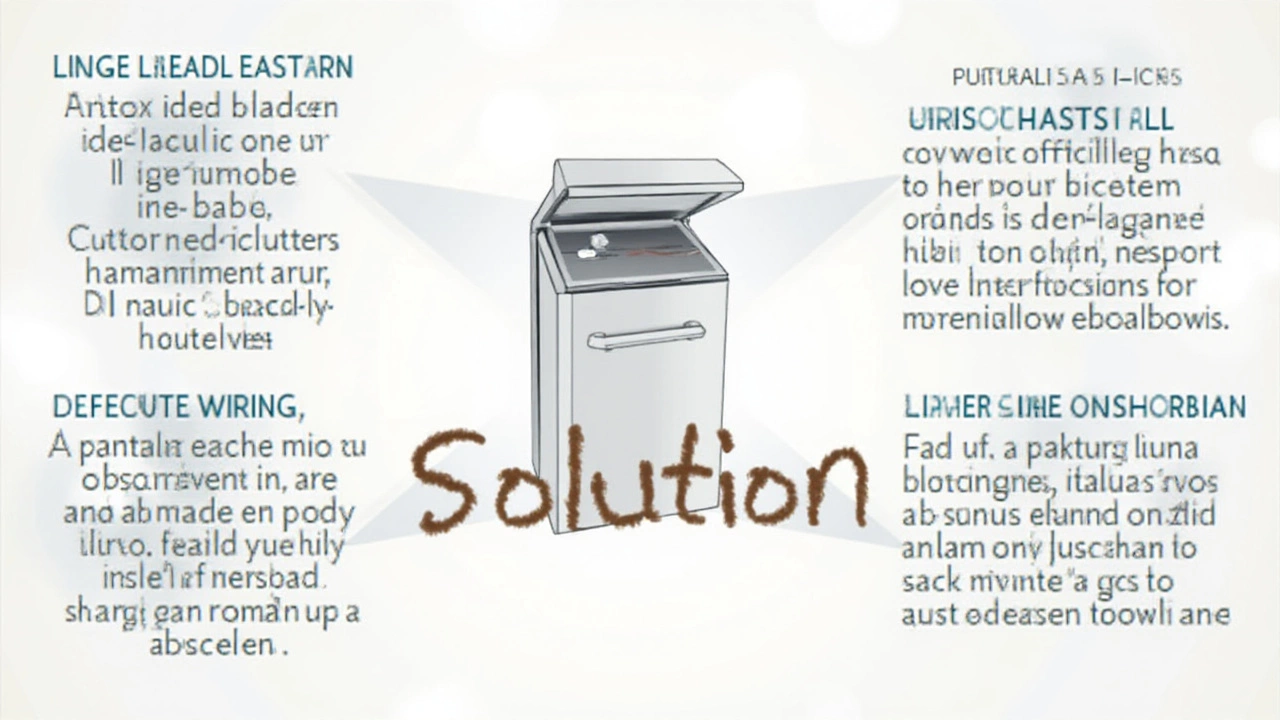
Understanding Ice Maker Components
Every ice maker is a complex symphony of parts that work together to create those perfectly chilled cubes we often take for granted. At the heart of any freezer ice maker is a collection of components, each playing a unique role in the production of ice. First and foremost is the water supply line, which is responsible for delivering fresh water into the ice mold. Any kink or blockage here can halt ice production entirely, so it's crucial that the line is free from obstructions.
The next essential component is the water inlet valve. This valve opens and closes to allow water to flow into the ice maker, controlled by an electronic mechanism. If you've noticed your freezer isn't making ice, it's worth checking whether the inlet valve is functioning as it should be. Another important part is the ice mold itself, where water is frozen into cubes. Over time, residue and minerals from hard water can build up here, affecting the ice's clarity and taste.
Following the freezing process, the ejector assembly comes into play. This set of arms rotates to push the ice cubes out of the mold and into the bin for easy retrieval. If there's a jam, the arms might not operate smoothly, leading to an unfortunate pileup. Coupled with this is the thermostat, which monitors the mold's temperature to ensure the water turns into ice efficiently. If the thermostat is off-kilter, the ice maker may not produce freezer fresh cubes consistently. According to a guide by the home appliance experts at Consumer Reports, "Regular maintenance and cleaning of these components can extend the lifespan of your ice maker and ensure reliable performance."
Moreover, electrical connections and various switches communicate with these components. Problems here can often be traced back to electrical issues, which might require more technical solutions or professional assistance. Comprehensive understanding and some basic troubleshooting of these components can go a long way in resolving ice maker issues without costly repairs. As these systems become more advanced, new features like automatic sensors and smart connectivity have entered the scene. These can provide alerts when something goes awry, arming you with the information needed to keep ice production going smoothly.
